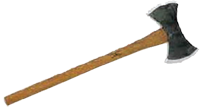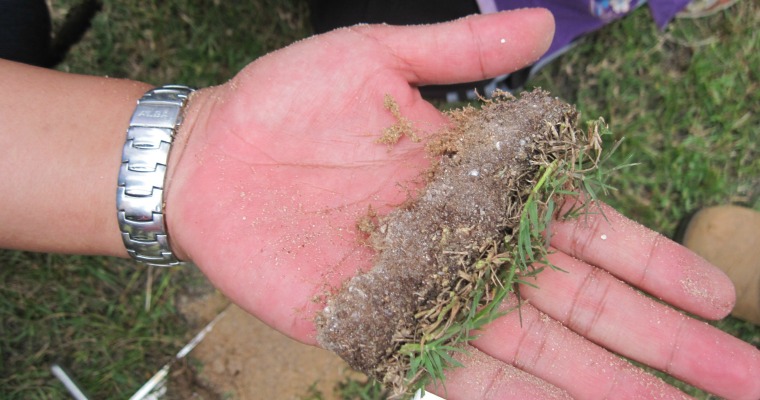Does your lawn suffer from thatch? Defined as a layer of decaying organic matter between the grass and soil, thatch is a serious problem that paves the way for disease.
Granted, small amounts of thatch is perfectly normal and can even help your lawn by protecting the grass from harm. When this layer becomes thick and large, however, it restricts grass from getting the moisture and nutrients that it needs.
Regulate pH Levels
A contributing factor to the formation of thatch is acidic soil. When soil is too acid, “good” microorganisms are unable to thrive, thereby resulting in the accumulation of organic matter between the grass and soil.
To prevent this from happening to your lawn, monitor and regulate the pH level of your soil, keeping it around 5 to 7 for maximum health.
Use Fungicides Cautiously
Thousands of homeowners use fungicide on their lawn to prevent and control fungal disease. However, some fungicides have been known to stimulate root growth. When applied, these products encourage faster root growth in grasses.
As the grass roots become longer, the ends may bundle up and die, thus creating thatch. You can still use fungicide on your lawn, but make sure that it doesn’t stimulate root growth beforehand.
Low-Nitrogen Fertilizer
Another helpful tip for thatch prevention is to use a low-nitrogen fertilizer. All fertilizers contain three primary compounds: nitrogen, phosphorus and calcium.
If a fertilizer contains too much nitrogen, however, it will stimulate the root growth of your grass and increase the pH level of your soil. So, choose a low-nitrogen fertilizer for your lawn.
Aerate Your Lawn
Aerating your lawn on a regular basis will lower the risk of thatch by allowing air and water to flow more freely through the soil. As a result, thatch is less likely to develop.
Most experts recommend aerating either in the spring or fall. Because of the high and low temperatures, respectively, it’s best to avoid aerating your lawn during the summer or winter.
Choose the Right Grass Variety
Certain species of grass are more susceptible to thatch than others. According to the University of Vermont (UVM), zoysi, Kentucky bluegrass, bentgrass and Bermuda have a high risk of developing thatch. If possible, consider a different species of grass for your lawn.
Remember, small amounts of thatch isn’t bad. It only becomes a problem when it grows to more than 2 inches deep. Following these tips, however, can help you control thatch in your lawn.
The Woodsman Company offers tree planting, tree pruning and shrub trimming, tree removal and stump grinding as well as a tree wellness program.
If we can help with any of your tree care needs give us a call at 512-846-2535 or 512-940-0799 or


Very well explained, thatch is one of the annoying thing in your lawn, this blog is really very helpful very good tips has been given.